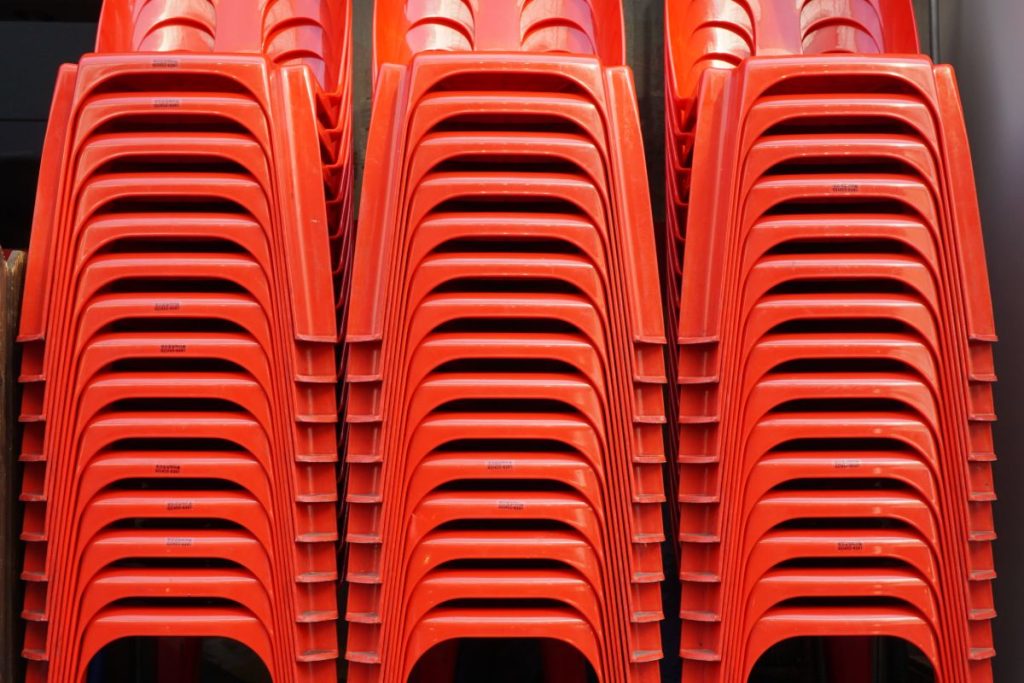What are the plastic mold-making trends to watch out for?
- Increased automation
- Lightweight materials
- Recycled materials
- Advanced software and prototyping
- In-Mold Labeling and decoration
Overview
- Plastic mold making is evolving with trends like automation, lightweight materials, recycled resins, and in-mold decoration shaping how tools are designed and built.
- These innovations improve production efficiency and product performance, helping businesses meet tighter tolerances, faster timelines, and sustainability goals.
- Staying ahead of these trends is key to maintaining manufacturing reliability, reducing waste, and adapting to shifting market demands.
As product lifecycles shorten and demand for precision manufacturing increases, mold makers are expected to deliver more than just durable tooling—they must also keep pace with evolving technologies and market requirements.
In this changing landscape, staying informed about emerging techniques and innovations is essential for any company involved in plastic production. That’s why in this article, we’ll explore different plastic mold-making trends to watch out for so you can improve your business’s efficiency, performance, and long-term value.
Increased Automation
Automation continues to transform the plastic mold-making industry. Advanced machinery such as CNC systems, robotic arms, and automated polishing stations, for instance, are reducing manual labor while improving repeatability and precision in mold fabrication. As a result, businesses benefit from shorter production cycles and tighter tolerances.
Automated quality control, including vision systems and sensor-based inspection, is also becoming a standard. These tools catch inconsistencies early, which helps avoid defects and reduces time lost to rework or adjustments. When built in early, automation supports consistent performance across high-volume runs.
Lightweight Materials
Mold makers are seeing increased demand for lightweight plastics and composite materials. This is especially relevant in sectors such as automotive, aerospace, and electronics, where reducing part weight can lead to significant improvements in performance and energy efficiency.
Material selection becomes even more critical when weight and strength must be balanced. Engineering-grade plastics and reinforced composites offer advantages, but they also demand a thorough understanding of how material behavior affects the tooling design and injection process.
The move toward lightweight solutions is not just about the materials themselves—it’s also about how the molds are engineered to accommodate them. Mold makers who can adapt to these shifts are helping their clients meet evolving performance targets without increasing manufacturing complexity.
Recycled Materials
Sustainability is influencing every stage of the product development cycle, including mold making. As this trend continues, mold makers must design tooling that performs reliably with variable or eco-friendly materials.
Recycled plastics often behave differently from virgin resins. They may have variations in melt flow, shrinkage, or color consistency—factors that directly impact mold design. To compensate, mold makers must fine-tune runner systems, adjust cycle times, and enhance cooling to ensure quality output.
By designing molds that perform well with recycled materials, mold makers contribute to a more circular manufacturing model. This capability is becoming a competitive advantage for businesses looking to align with environmental standards and consumer expectations.
Advanced Software and Prototyping
Modern mold design relies heavily on advanced CAD/CAM platforms and simulation software. These tools allow mold makers to predict flow behavior, potential defects, and cooling performance before physical molds are built. The result is faster development with fewer design iterations and less trial-and-error.
Rapid prototyping tools, including 3D printing, are also enhancing early-stage testing. By creating prototypes or pre-production parts quickly, designers and engineers can evaluate form, fit, and function without committing to full tooling. This is especially useful for complex geometries or short-run parts.
In-Mold Labeling and Decoration
Product aesthetics and branding are now becoming even more important, with in-mold labeling (IML) and in-mold decoration (IMD) gaining popularity. These techniques integrate printed graphics, textures, or branding directly into the molded part during the injection process, eliminating the need for secondary labeling or printing.
For mold makers, supporting IML or IMD requires high-precision tooling and tight process control. The mold must be designed to hold and position the decorative insert securely, often in coordination with automation systems that place the label inside the cavity before injection.
IML and IMD also offer a more durable and cost-effective solution for high-quality branded products. As demand for decorated and consumer-facing parts grows, mold makers are expanding their capabilities to meet these specialized requirements without sacrificing efficiency.
Key Takeaway
Keeping up with the latest plastic mold making trends to watch out for is more than just staying current—it’s a strategic move to enhance product quality, reduce time-to-market, and maintain long-term manufacturing efficiency.
At Richfields, we closely monitor industry developments and continuously invest in our capabilities to align with global standards and innovations. If you’re looking for a mold-making partner who can support your business with precision, insight, and export-quality service, get in touch with us today. Let’s build smarter, together.
